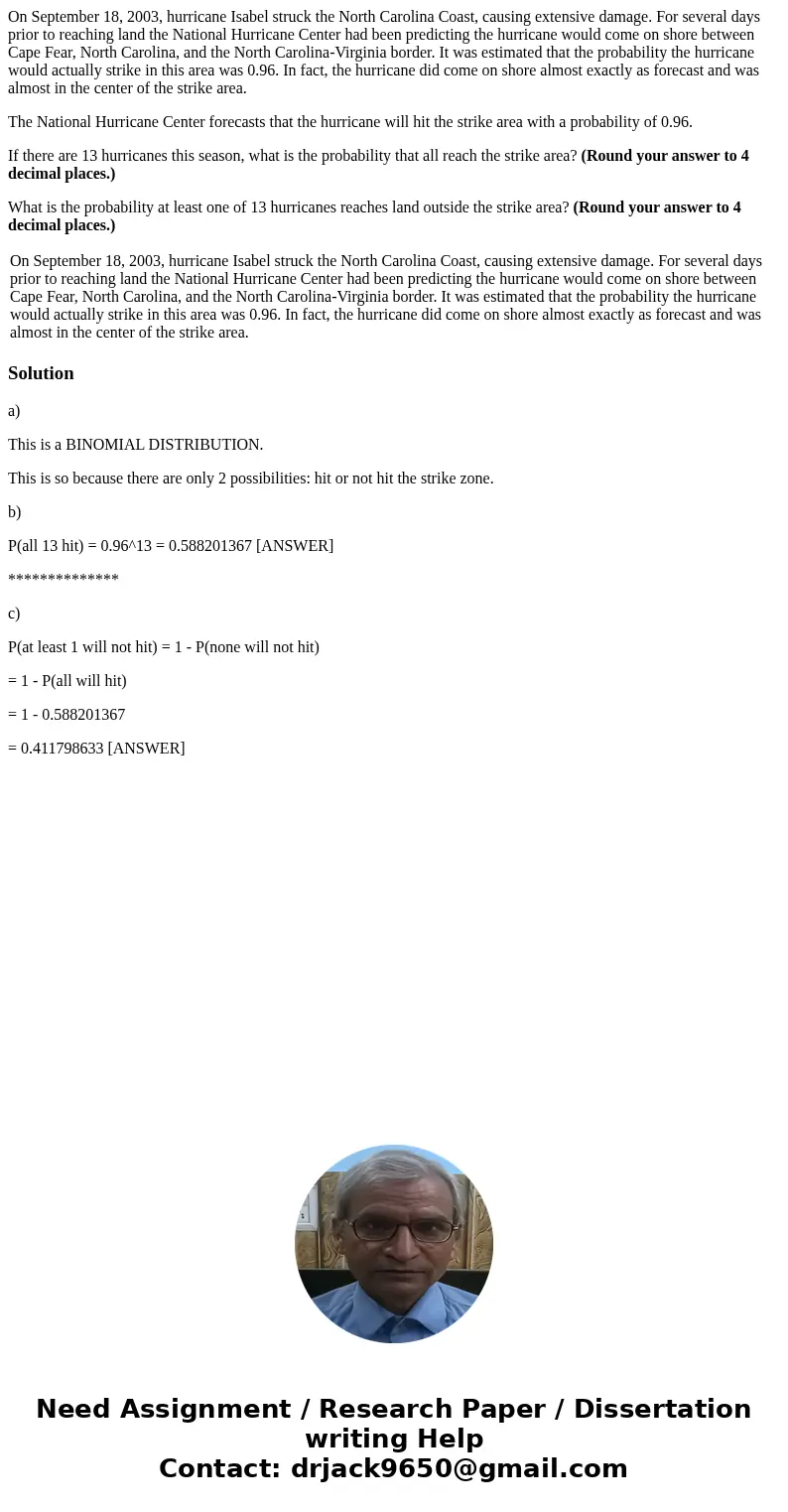On September 18 2003 hurricane Isabel struck the North Carol
On September 18, 2003, hurricane Isabel struck the North Carolina Coast, causing extensive damage. For several days prior to reaching land the National Hurricane Center had been predicting the hurricane would come on shore between Cape Fear, North Carolina, and the North Carolina-Virginia border. It was estimated that the probability the hurricane would actually strike in this area was 0.96. In fact, the hurricane did come on shore almost exactly as forecast and was almost in the center of the strike area.
The National Hurricane Center forecasts that the hurricane will hit the strike area with a probability of 0.96.
If there are 13 hurricanes this season, what is the probability that all reach the strike area? (Round your answer to 4 decimal places.)
What is the probability at least one of 13 hurricanes reaches land outside the strike area? (Round your answer to 4 decimal places.)
| On September 18, 2003, hurricane Isabel struck the North Carolina Coast, causing extensive damage. For several days prior to reaching land the National Hurricane Center had been predicting the hurricane would come on shore between Cape Fear, North Carolina, and the North Carolina-Virginia border. It was estimated that the probability the hurricane would actually strike in this area was 0.96. In fact, the hurricane did come on shore almost exactly as forecast and was almost in the center of the strike area. |
Solution
a)
This is a BINOMIAL DISTRIBUTION.
This is so because there are only 2 possibilities: hit or not hit the strike zone.
b)
P(all 13 hit) = 0.96^13 = 0.588201367 [ANSWER]
**************
c)
P(at least 1 will not hit) = 1 - P(none will not hit)
= 1 - P(all will hit)
= 1 - 0.588201367
= 0.411798633 [ANSWER]

 Homework Sourse
Homework Sourse